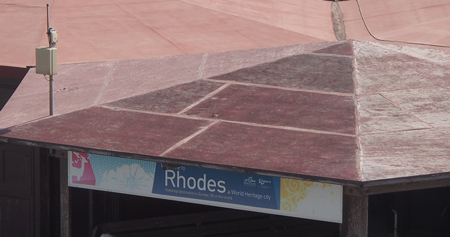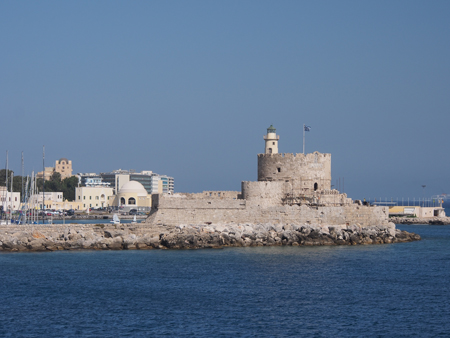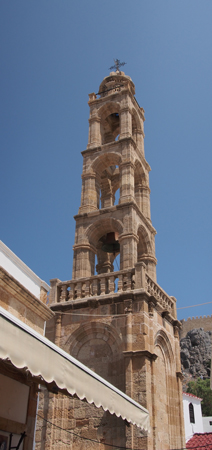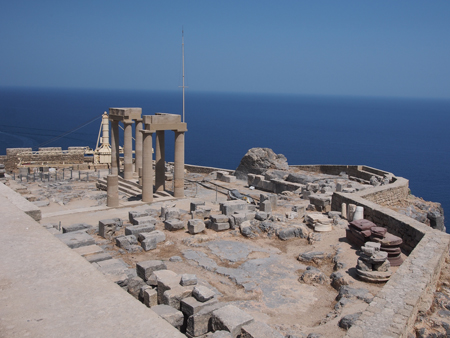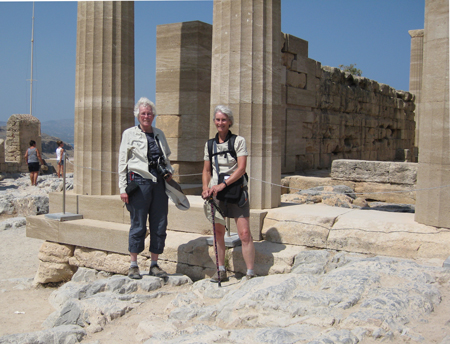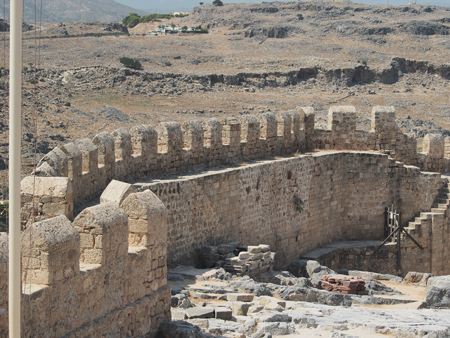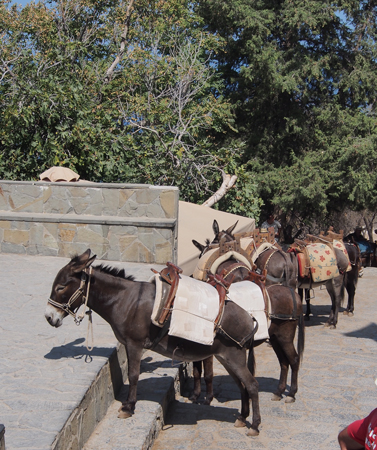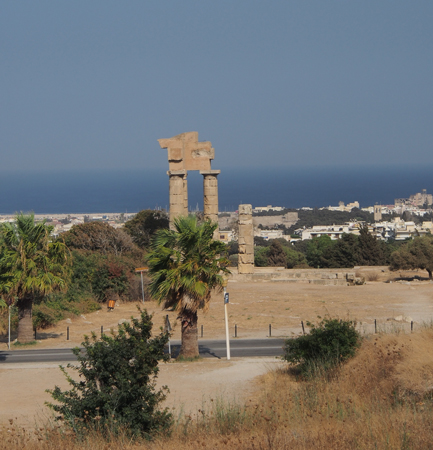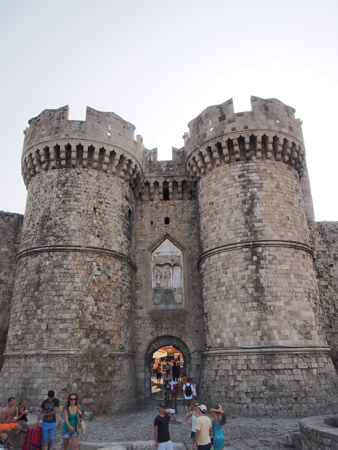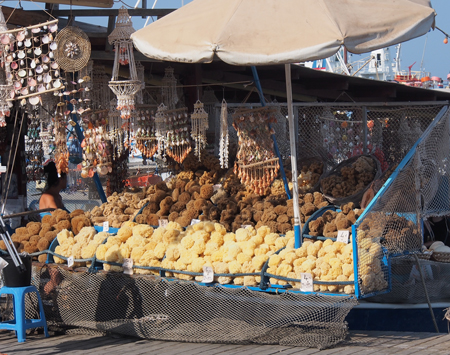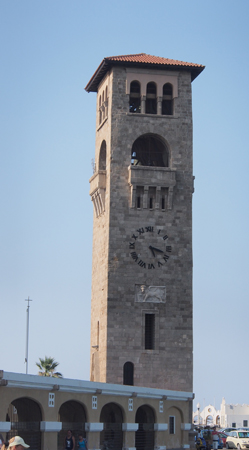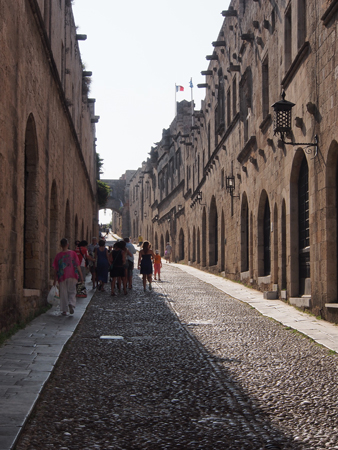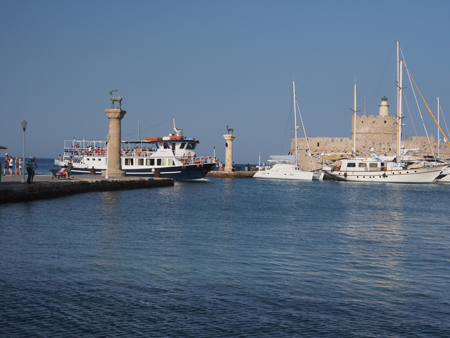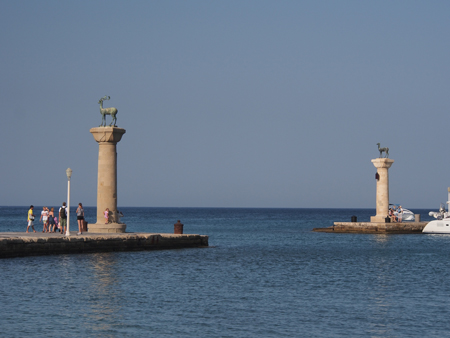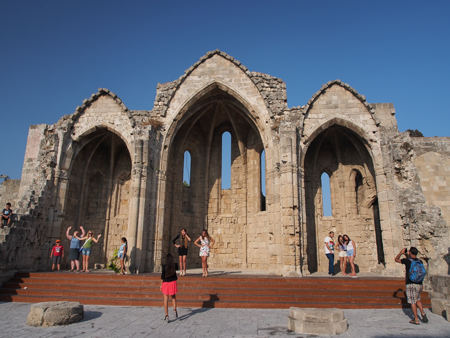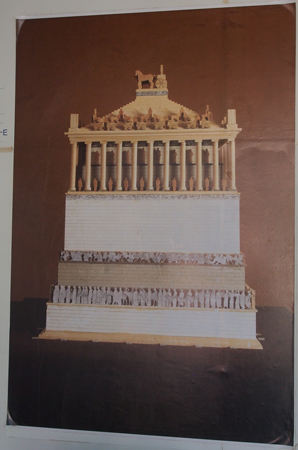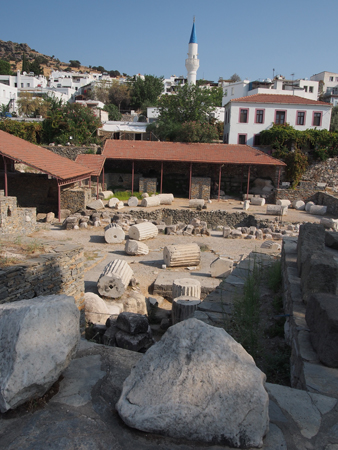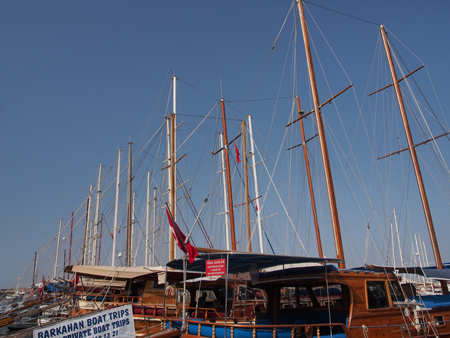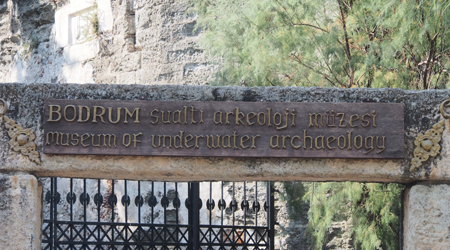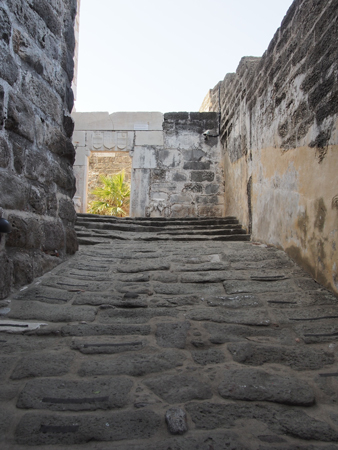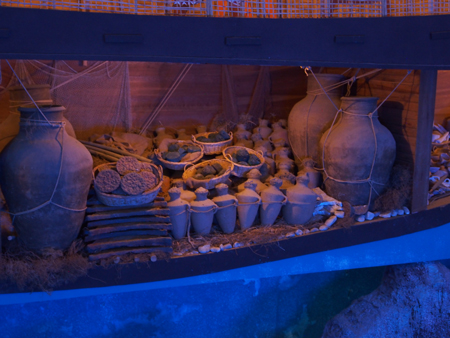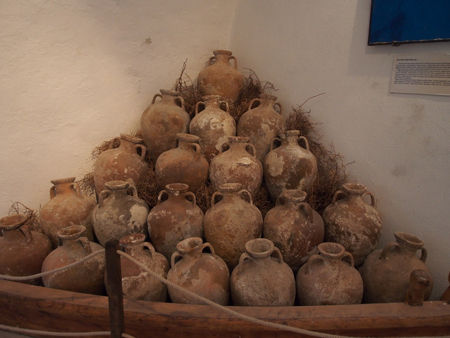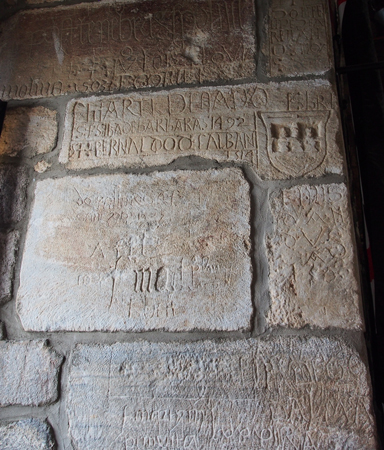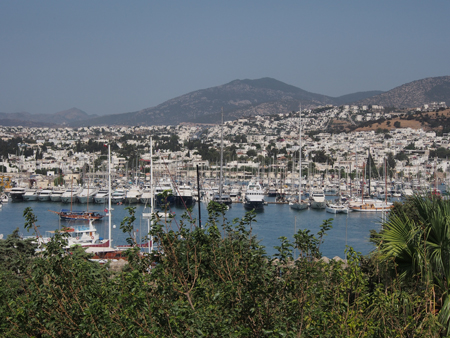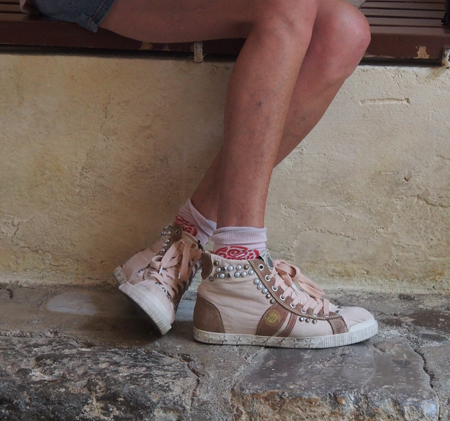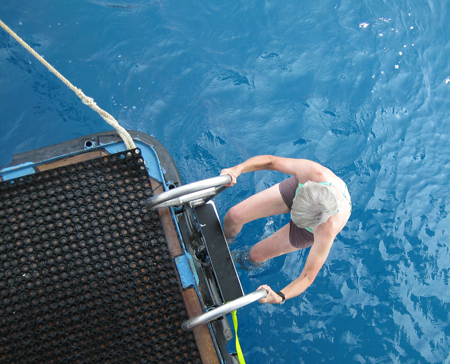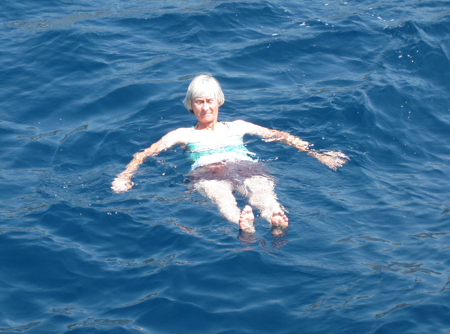Tues., 8/20/13 - Rhodes, Greece
At 1 PM we went on a shore excursion to the ruins at Lindos. There were only 11 in our group, which was very nice. On the hour drive along the east coast through olive and citrus trees in our minibus, our local guide, Demetrius, gave us a history lesson and his views on life today on the island of Rhodes. Lindos is a port city dating back to the 12th c.
In Lindos we stopped at the very ornate Greek Catholic Church of the Virgin Mary. It was built in 1494 and every wall and ceiling is covered with frescos of Bible scenes.
We walked the 200 steps up to the Acropolis of Lindos ruins to the Temple of Athena Lindos. The Winged Victor, now in the Louvre, and Nike fighting two snakes, now in the Vatican museum, were both originally part of this acropolis. The statues were "stolen" and taken to foreign countries and the granite building blocks were taken and used in other buildings.
Flag of Greece
|
EU License Plate of Greece |
|
Ft. Saint Nicolas at the entrance to the harbor
|
City walls |
Manhole cover
|
Acropolis of Lindos
|
Acropolis of Lindos |
Church of the virgin Mary
|
Acropolis of Lindos - Columns of the Hellenistic stoa |
It was windy!
|
Acropolis of Lindos |
Beach |
An alternate means of transport up to the Acropolis
|
Back in Rodos, we drove past the 3 1/2 remaining columns of the Temple of Apollo on the Acropolis of Rhodes and through town to the outside of the city walls that were built around the 15th c. by the Knights of St. John. We got off the bus at the old town and walked to take pictures of the harbor entrance, the clock tower built in 1851, and a lookout post. We walked along the Street of the Knights from the Hospital of the Knights, now an archeological museum, to the three remaining arches of the basilica.
|
Temple of Apollo on the Acropolis of Rhodes
|
St. Catherine’s Gate
|
A sponge stall |
Bell tower of Rhodes
|
Cobbled streets! |
The Colossus of Rhodes did exist according to scripture and ancient writings, but it did not straddle the harbor. The bronze statue was 100 meters tall and held a burning flame above his head as a light for ships at sea.
|
|
Entrance to Mandraki Harbor - Statues of male and female deer
|
Entrance to Mandraki Harbor - Statues of male and female deer |
Fashion model shoes - great for cobblestones!
|
Gave up waiting for the fashion shots to be taken and just took this picture of the remains of the Church of St. Mary of the Bourg |
Wed., 8/21/13 - Bodrum, Turkey
This morning we joined a ship excursion at 8:30 to investigate the old city of Bodrum, Turkey. Our ship anchored out in the harbor and our crew tendered us into town. We met our guide, 70 year-old Simih, and rode a minivan through town to the Mausoleum of Halicarnassus. It was one of the Seven Wonders of the Ancient World and was described in Roman writings in the 2nd c. BCE. It is believed that an earthquake in the 14th c. destroyed the building and the marble blocks were used to build the Castle of St. John and parts of local houses.
We have visited the sites of five of these
|
|
Drawing of the original Mausoleum of Halicarnassus
|
Ruins of the Mausoleum of Halicarnassus |
Bodrum (called Halicarnassus in ancient times) was a quiet fishing village with many sponge divers until rich movie and rock stars found it and tourism and building erupted in the late 20th c. Unfortunately, British archeologists uncovered the ruins of the mausoleum in the 1980's and now the friezes from the tomb are in the British Museum and the town is crowded and the harbor chock full of expensive yachts.
|
|
Harbor full of sightseeing gulets
|
Cute manhole cover |
We walked with Simih (there were only seven on this tour) to the Castle of St. John. The Knights of St. John built it in 1522. Bodrum means dungeon in the Turkish language and the castle was once used as a dungeon. It was also a hospital and resting place for pilgrims and knights going to the Holy Lands.
|
Museum of Underwater Archaeology |
Museum of Underwater Archaeology
|
Museum of Underwater Archaeology |
Museum of Underwater Archaeology
|
Museum of Underwater Archaeology - Amphorae |
In the Castle of St. John
|
Harbor |
Fishing boat |
Another great pair of shoes
|
It was very hot again today but we walked along the shops by the beach back to the cruise terminal to ferry out to our ship for lunch. After lunch Gale went aft on our ship to the "marina" and went swimming in 100 feet of Aegean water. The temperature was perfect but the wind, current, and growing swells made it difficult to swim back to the ship.
|
|
|
|
| Return to Top | Return to Itinerary | Return to Trips page to view other trips | Return to Dreamcatcher Home Page |


